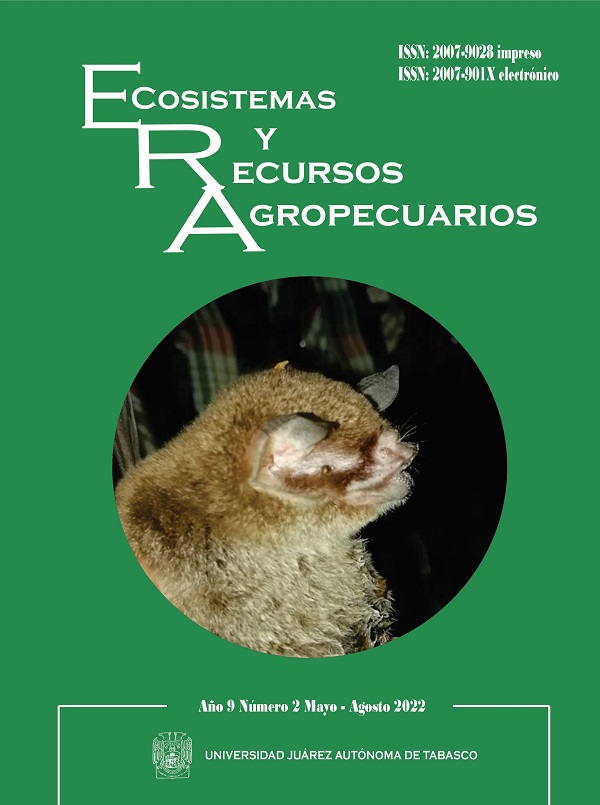Fungi on the skin of anurans from Coatan river watershed, Chiapas, Mexico
DOI:
https://doi.org/10.19136/era.a9n2.3300Keywords:
Frogs, amphibians, imperfect fungi, whateshed, mexican southeastAbstract
As a result of the land use change, amphibian populations have been threatened by a species of pathogenic fungus, but there are other species of potentially mortal fungi about which little is know The watersheds of Chiapas coast have been severely altered, and several species of anurans are exposed to pathogenic fungi, therefore the aim of this work was determine the richness fungal species on the skin of anurans from the Coatan river watershed in Chiapas, Mexico. A total of 90 individuals of different species of anurans were collected from lower, middle and upper zones of the watershed. Skin fragments from dorsum and belly of each individual were dissected and cultured in PDA y TGhL medium, isolated and identified to species level when it was possible. Differences between composition of fungi species and environmental variables of each watershed zones were analyzed. A total of 24 fungi species were identified in seven anuran species from different habitat; in the Lower zone, the highest fungi species richness, the highest species number per host and higher species number in the ventral tissue were found. The species composition was different at the middle zone, and all zones were environmentally different. Some fungi genera found here have been reported as pathogens of amphibians, reptiles or plants, no sick or death individuals were observed. Agriculture activities promote the presence of fungi on anurans skin, an these can be natural disperses of pathogenic fungi for several species including those of agricultural importance.
Downloads
Downloads
Published
Issue
Section
License
Copyright (c) 2022 Ecosistemas y Recursos Agropecuarios

This work is licensed under a Creative Commons Attribution-NonCommercial-ShareAlike 4.0 International License.
Aviso de copyright
Los autores que se envían a esta revista aceptan los siguientes términos:
una. Los autores conservan los derechos de autor y garantizan a la revista el derecho a ser la primera publicación del trabajo con una licencia de atribución de Creative Commons que permite a otros compartir el trabajo con un reconocimiento de la autoría del trabajo y la publicación inicial en esta revista.
B. Los autores pueden establecer acuerdos complementarios separados para la distribución no exclusiva de la versión del trabajo publicado en la revista (por ejemplo, en un repositorio institucional o publicarlo en un libro), con un reconocimiento de su publicación inicial en esta revista.
C. Se permite y se anima a los autores a difundir su trabajo electrónicamente (por ejemplo, en repositorios institucionales o en su propio sitio web) antes y durante el proceso de envío, ya que puede conducir a intercambios productivos, así como a una cita más temprana y más extensa del trabajo publicado. (Consulte El efecto del acceso abierto).


